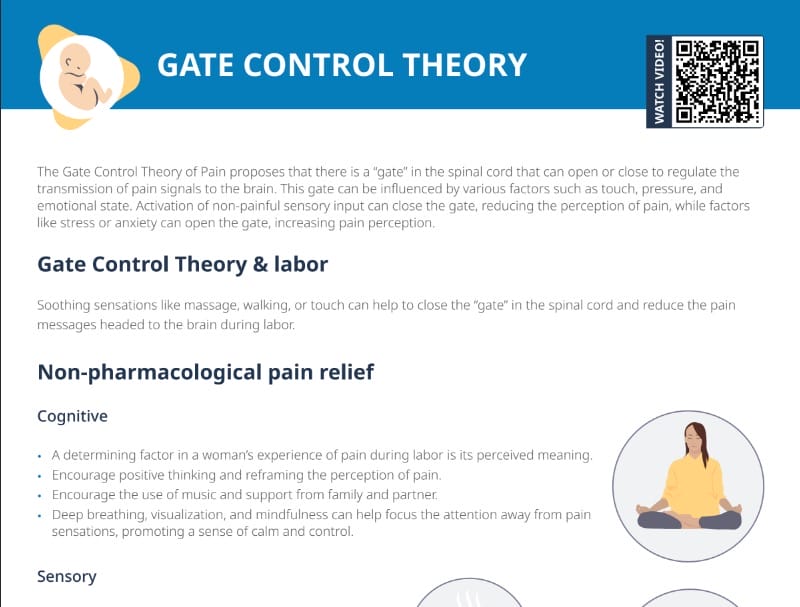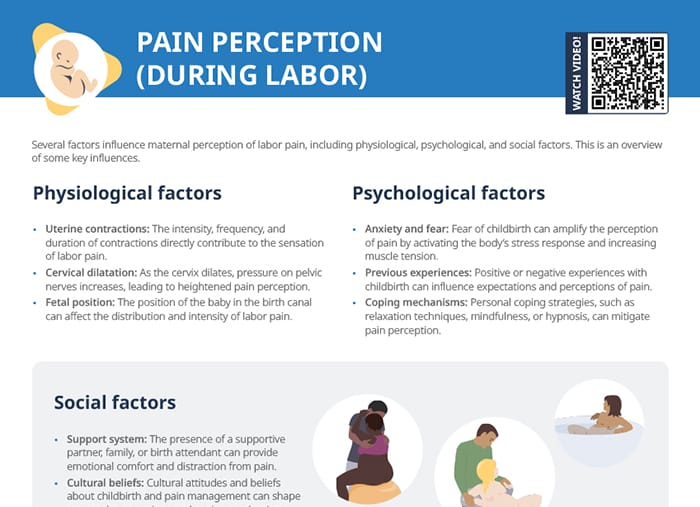What is pain perception?
Pain perception is how the body detects, interprets, and responds to pain stimuli. Signals from nociceptors (pain receptors) are transmitted through the spinal cord to the brain, where the pain is consciously registered. This process can be influenced, intensified, or weakened by many factors, for example:
- Genetics determining pain sensitivity
- Health condition
- Emotional, cognitive, and cultural factors
- Context and distractions
How does age affect pain perception?
Infants may have a heightened sensitivity to pain due to their still developing pain perception mechanisms. In adults, a typically better understanding of the implications of pain can affect its perception and reporting, as well as past experiences shaping pain perception. In older adults, changes in pain threshold may occur due to cognitive changes, alterations in the nervous system, and decreased pain receptor density.
Which factors influence pain perception during labor?
Several factors influence maternal perception of labor pain, including physiological, psychological, and social factors. This is an overview of some key influences.
Physiological factors
- Uterine contractions: The intensity, frequency, and duration of contractions directly contribute to the sensation of labor pain.
- Cervical dilatation: As the cervix dilates, pressure on pelvic nerves increases, leading to heightened pain perception.
- Fetal position: The position of the baby in the birth canal can affect the distribution and intensity of labor pain.
Psychological factors
- Anxiety and fear: Fear of childbirth can amplify the perception of pain by activating the body’s stress response and increasing muscle tension.
- Previous experiences: Positive or negative experiences with childbirth can influence expectations and perceptions of pain.
- Coping mechanisms: Personal coping strategies, such as relaxation techniques, mindfulness, or hypnosis, can mitigate pain perception.
Social factors
- Support system: The presence of a supportive partner, family, or birth attendant can provide emotional comfort and distraction from pain.
- Cultural beliefs: Cultural attitudes and beliefs about childbirth and pain management can shape maternal expectations and coping mechanisms.
Nursing interventions for pain management in labor
- Conduct thorough pain assessments to understand the nature and intensity of labor pain.
- Utilize pain rating scales to quantify pain intensity and monitor changes over time.
- Offer a range of pain relief options, including pharmacological (e.g., epidural anesthesia, analgesics) and non-pharmacological interventions (e.g., massage, breathing techniques, hydrotherapy).
- Advocate for the client’s preferences and ensure healthcare providers respect their choices regarding pain management.
- Provide continuous emotional support and reassurance throughout labor.
- Encourage open communication and active listening to address fears, concerns, and preferences related to pain management.
Client education about labor pain
Educate the client about the physiological process of labor and pain perception to help manage expectations. Teach coping strategies such as breathing techniques, visualization, and progressive muscle relaxation. Discuss the benefits and risks of pain relief options to empower informed decision-making.

